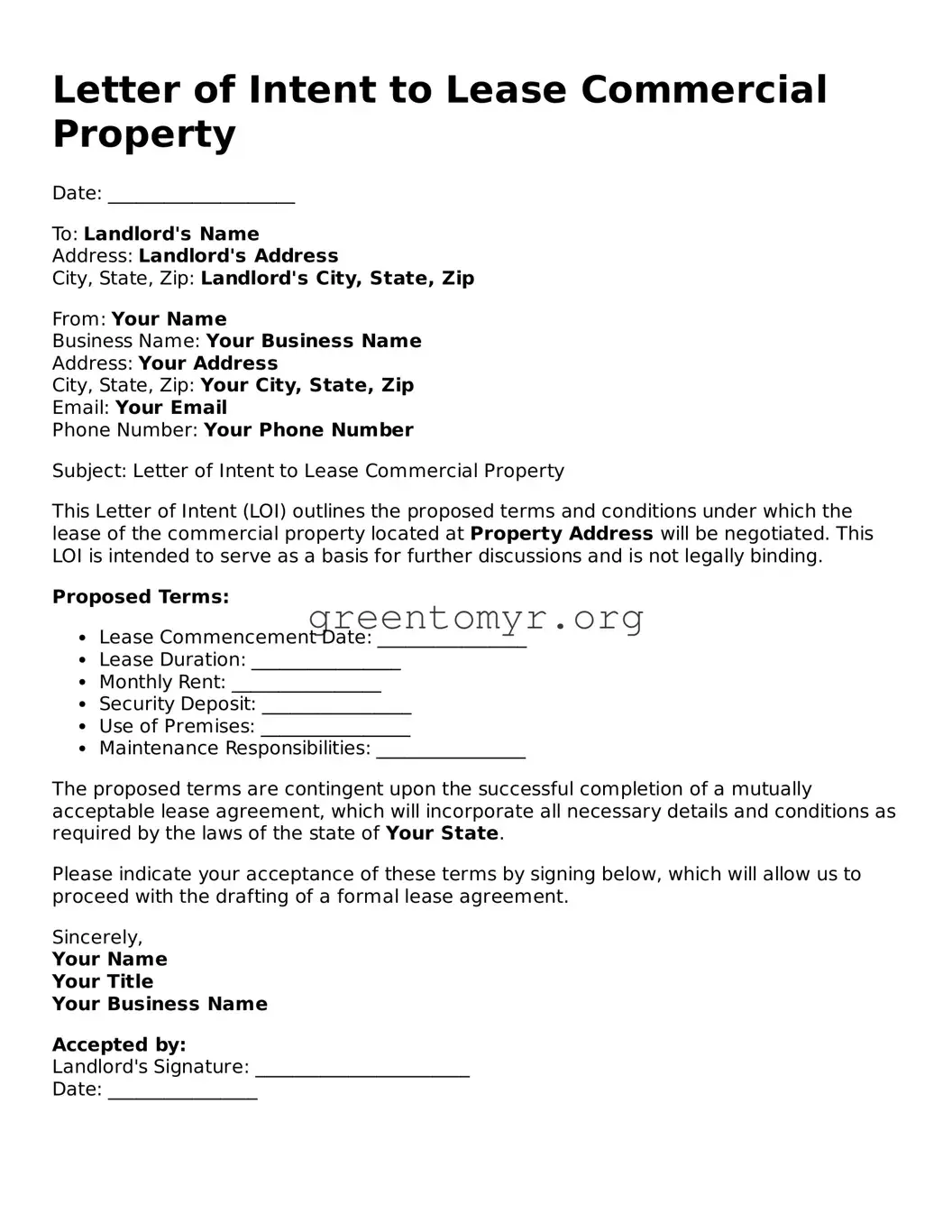Letter of Intent to Lease Commercial Property
Date: ____________________
To: Landlord's Name
Address: Landlord's Address
City, State, Zip: Landlord's City, State, Zip
From: Your Name
Business Name: Your Business Name
Address: Your Address
City, State, Zip: Your City, State, Zip
Email: Your Email
Phone Number: Your Phone Number
Subject: Letter of Intent to Lease Commercial Property
This Letter of Intent (LOI) outlines the proposed terms and conditions under which the lease of the commercial property located at Property Address will be negotiated. This LOI is intended to serve as a basis for further discussions and is not legally binding.
Proposed Terms:
- Lease Commencement Date: ________________
- Lease Duration: ________________
- Monthly Rent: ________________
- Security Deposit: ________________
- Use of Premises: ________________
- Maintenance Responsibilities: ________________
The proposed terms are contingent upon the successful completion of a mutually acceptable lease agreement, which will incorporate all necessary details and conditions as required by the laws of the state of Your State.
Please indicate your acceptance of these terms by signing below, which will allow us to proceed with the drafting of a formal lease agreement.
Sincerely,
Your Name
Your Title
Your Business Name
Accepted by:
Landlord's Signature: _______________________
Date: ________________
